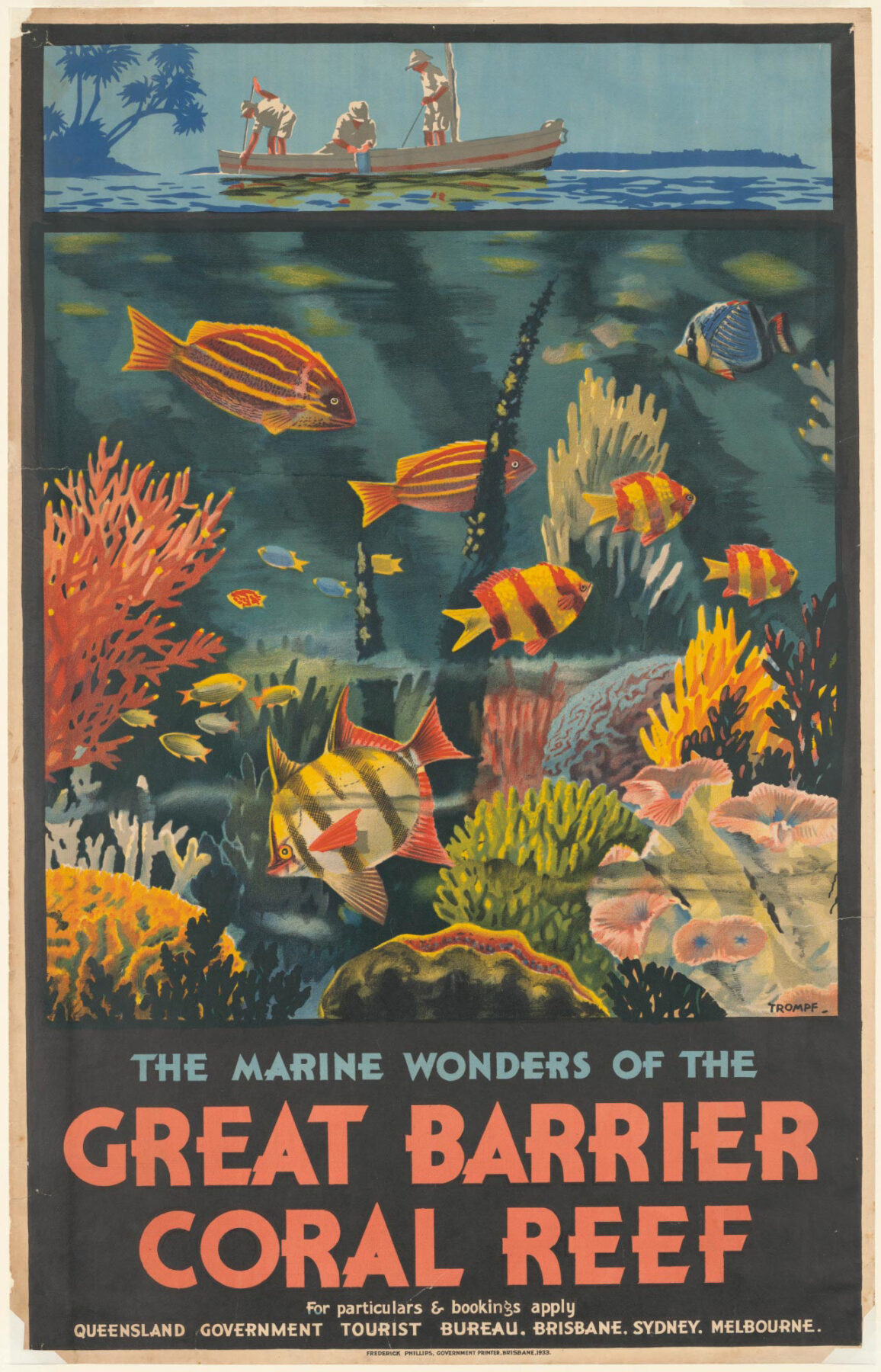Defining Moments in Australian History: Protecting the Great Barrier Reef

Back in the 1960s two Queensland-based conservation societies – the Wildlife Preservation Society of Queensland (WPSQ) and the Queensland Littoral Society (QLS), now the Australian Marine Conservation Society – helped spearhead a national movement to protect the Great Barrier Reef (GBR) from oil drilling and coral mining. From 1966 sections of the tourism industry, appreciating the unique appeal of the reef to visitors, also began calling for the creation of a marine park on the reef.

But in 1967 Donald Forbes, Secretary of the Cairns District Cane Growers’ Executive, applied for a lease to mine coral on Ellison Reef, south-east of Innisfail, for agricultural lime, claiming Ellison’s corals were “dead” after a cyclone. Concerned the application might set a precedent for future mining on the reef, John Büsst and poet Judith Wright of the WPSQ, together with the QLS, successfully opposed the mining proposal through the Innisfail Mining Warden’s Court.
However, the conservation societies didn’t have the resources to fight every mining application in court, so, soon after their Innisfail success, they launched a state-wide Save the Reef campaign, calling on the federal government to take control of the area and declare it a marine park.
During this time, the Queensland government, under the leadership of Joh Bjelke-Petersen, was determined to establish an offshore petroleum industry and in 1968 opened up the state’s entire coastline to oil exploration. Within two years, six exploration holes had been drilled by different companies along the GBR.
The turning point for conservationists came when an Australian–Japanese joint venture, Japex Ltd, announced it would begin drilling in February 1970 at Repulse Bay, south of the Whitsunday Passage. The Queensland Trades and Labor Council threw its support behind a wider reef conservation campaign by black-banning all reef mining and drilling activities, preventing trade unionists from providing goods or services necessary for the Whitsunday drilling project to continue. Public opinion against mining on the reef intensified after a series of international disasters involving oil tankers from 1967 to 1970.
In January 1969 the Queensland and federal governments launched a joint inquiry to look at the “possibility” of oil drilling causing damage to the reef, leading to the establishment of a royal commission the following year. The then prime minister, John Gorton, supported a mining moratorium, but a lack of clarity about state–federal jurisdiction over offshore resources meant he was reluctant to override the petroleum exploration leases issued by the Queensland government. Gough Whitlam, who was leader of the Opposition at the time, believed the federal government already had the constitutional right to protect the reef. When Whitlam’s Labor government was elected on 5 December 1972, it moved quickly to enact the Sea and Submerged Lands Act 1973. This legislation provided the federal government sovereignty over territorial seas and resources to the extent of the continental shelf.
In November 1974 Whitlam announced the Australian Government would create a marine park to protect the reef from oil drilling, leading to the Great Barrier Reef Marine Park Act 1975. The first area of the marine park – the Capricornia Section – was proclaimed in 1979 and covered 12,000sq.km. Today, the marine park has an area of 344,400sq.km. and coral reefs make up about 7 per cent of the area. The park’s other ecosystems include shallow seagrass, mangroves, sand, and algal and sponge gardens. Areas within the park are zoned for certain activities and some are open to general use.
In 1981 the GBR was inscribed on the World Heritage List as “one of the richest and most complex complex natural ecosystems on earth” and an area of “superlative natural beauty”.
‘Protecting the Great Barrier Reef’ forms part of the National Museum of Australia’s Defining Moments in Australian History project.

